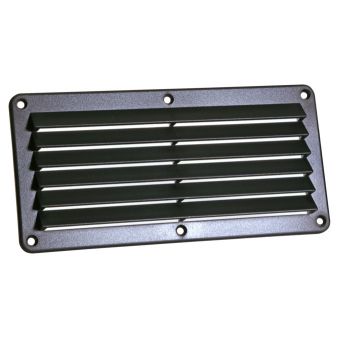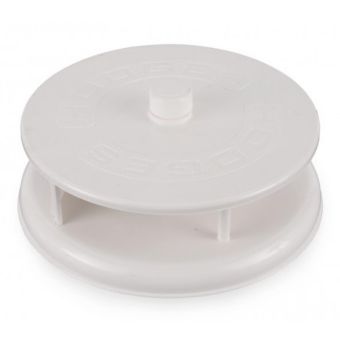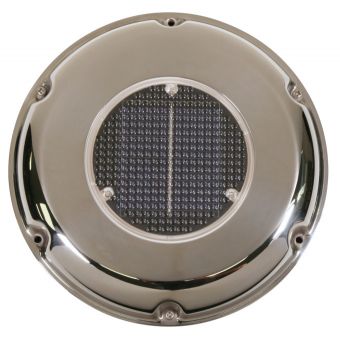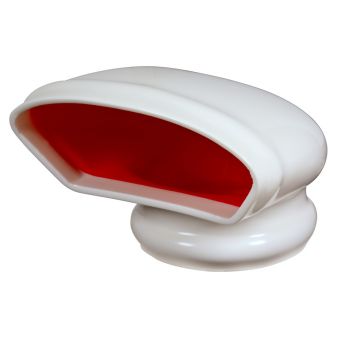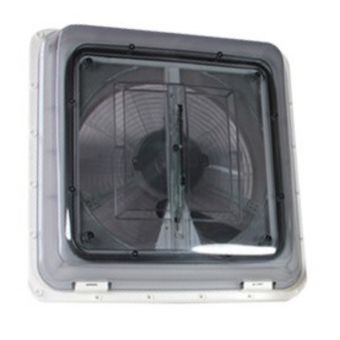An important part of every motorhome/campervan that is easily overlooked - inadequate ventilation (or none at all) can quickly turn your getaway sour! This guide will touch on the reasons why RV ventilation is so important and what you need to think about when building or purchasing a campervan, caravan, motorhome or RV.
Overview
Living and travelling in a campervan is an absolutely freeing feeling, but those who haven’t delved into mobile living might be in for a bit of a shock on their first trip. Unlike a lovely spacious modern home, confined motorhomes and campervans offer up challenges that most people don’t think of. One of the key factors to achieving a comfortable living environment is to effectively regulate airflow in the vehicle.
Why should I ventilate my RV?
There are 4 main reasons to ventilate your campervan:
● To regulate the internal temperature to keep a comfortable living environment
● To prevent moisture/mould build up and dry out condensation
● To combat odours from cooking, dirty clothes and dirty bodies
● To allow safe and certifiable use of LPG appliances inside
Creating a comfortable living environment
Unlike houses which are built with permanent passive ventilation, campervans and motorhomes are essentially a sealed metal (or fiberglass) box. Everyone knows how disgustingly hot your car can get when it’s parked in the sun, and RV’s are no different! Having a roof vent (hot air rises) to expel some of the heat will make returning to the camper after playing in nature all day that little bit more bearable. The interior space is confining enough at times, and adding hot stuffy air in the mix is a real buzzkill! TIP: Crack a window if possible as well, letting fresh air in and pushing the hot air up and out the vent.
Prevent moisture, mould and condensation
Surely, you’ve noticed waking up on those cold mornings to find your windows streaming with condensation in your house . . . well times that by 10 if you're in a campervan or motorhome! Moisture and condensation are almost unavoidable as cooking and even just breathing expels moisture into the air. There’s nothing you can do to avoid it all together, but you can drastically reduce the damaging effects by having proper ventilation. The key to drying out the dampness and minimising the chances of nasty mould growing is to allow fresh air to circulate the vehicle. TIP: Wipe your windows with a cloth/towel each morning, don’t let it drip down behind cabinets etc
Combating stale air and odours
Remember the funky smells that used to ooze (yuck!) from your bedroom as a teenager? While a lot of that had to do with ‘growing up’, it was mainly caused by the lack of ventilation and the nasty things littered around the room. The same problem can happen in any camper if you're not careful! The odours from cooking, rubbish, dirty clothes and lack of showers will cause any confined space to get a bit whiffy. Allowing fresh air to circulate the cabin will make tiny living much more bearable, and much less embarrassing should some campground friends pop their heads in. TIP: Cook outside when possible and remove rubbish as often as you can.
Allow safe and certifiable use of LPG appiances
While the above reasons are definitely important, this reason takes the cake. Operating LPG appliances for cooking or heating in a small space can be deadly. If even the smallest leak occurs, the vehicle can quickly fill with toxic gasses which are harmful to breathe and could ‘go up’ with any spark. Proper ventilation allows fresh air in, as well as allowing harmful gasses or fumes to escape. TIP: To ensure you are choosing the right vent that ticks all the boxes for LPG certification, speak to a professional first.
Now you know WHY you need to ventilate your motorhome, let’s look at HOW to do it!
What is The Best Way To Ventilate My RV?
There’s a method for every budget, and we’ll discuss the pro’s and con’s of each below. Here are the popular ventilation methods:
● Opening Windows & Doors
● Louvred Vents
● Rotary Roof Vents
● Opening Roof Vents
● Fan Powered Roof Vents
Opening Windows & Doors
This is the quickest, easiest, and only free way of ventilating your motorhome. This is a great method on a lovely breezy summer's day, but let's be honest, those can be few and far between at times here in New Zealand. It relies on a good bit of wind to be effective and as soon as the rain starts, you’ll be shutting up to avoid wet seats! Open windows also make your RV an easy target for thieves and therefore can only be done while you’re with the vehicle. TIP: Rain deflectors can be brought for most vehicles to hide the open window and keep rain out!
Pros:
- Free
- Easy
Cons:
- Relies on wind and/or vehicle motion to be effective
- Not weather tight
- Unsafe to leave unattended or overnight
Conclusion:
This is a quick and easy way to get some fresh air into your RV but shouldn’t be relied on as the only ventilation method. Use in conjunction with the below options to get better results.
Louvred Vents
Installing small louvred vents in strategic locations around your motorhome is the cheapest and easiest way to provide permanent ventilation. Placing one of these vents down lower will allow fresh and cool air to enter the cabin, and when combined with another vent higher up, will expel hot air out of the vehicle. Installing these vents will require a little bit of DIY know-how and nerves of steel when cutting holes in the side of your camper. TIP: Install a flyscreen or mesh behind the vent to keep debris and bugs out!
Conclusion:
We would consider louvred vents to be the BARE MINIMUM required for motorhome ventilation. While they do enable air to flow through the vehicle, they don’t move enough air around to effectively remove moisture and are almost useless when the vehicle is stationary or there’s no wind.
Pros:
- Cheap
- Easy To install
- Maintains factory/stealth look
- Permanent vent for LPG safety
Cons:
- Relies on wind and/or vehicle motion to be effective
- Care needs to be taken when cleaning vehicle
- Doesn’t effectively circulate the whole cabin
Conclusion:
We would consider louvred vents to be the BARE MINIMUM required for motorhome ventilation. While they do enable air to flow through the vehicle, they don’t move enough air around to effectively remove moisture and are almost useless when the vehicle is stationary or there’s no wind.
Rotary Roof Vents
The next step up in ventilation efficiency is the basic rotary roof vents. These are known for being tough, reliable, and are a good simple solution. They can circulate a decent amount of air and are a great option if space is at a premium on your roof. However, like with the options above, they only work when the wind is blowing or the vehicle is in motion. The installation is easy, but needs to be done correctly as a leak in the ceiling can be a costly fix.TIP: Use the manufacturers recommended silicone/sealant for the best weatherproof seal.
Pros:
- Cost effective
- Easy To install
- Weatherproof
Cons:
- Relies on wind and/or vehicle motion to be effective
- Won’t expel cooking steam of fumes effectively
Conclusion:
Rotary roof vents are a cheap and basic way to create additional ventilation in your campervan. They’re relatively simple to install and provide permanent, waterproof airflow. These will do the job for smaller campers or if you’re on a tight budget.
Opening Roof Vents
Now we’re into real and effective ventilation territory. Most people with or without RV’s will be aware of these products. They’re the industry standard for providing ventilation in new motorhomes. These vents/hatches usually offer permanent ventilation even in the closed position, giving some much needed air flow and are a must (for certification) if you're installing LPG appliances. Opening these roof vents up fully allows a lot of air to escape your camper, they can also be left open unattended without the fear of a break in! TIP: Install with the hinged side towards the front of the vehicle, that way you can drive with it open and won’t lose the lid somewhere on the highway!
Pros:
- Allows flow of larger volumes of air
- Allows natural light in (depending on model)
- Permanent weatherproof ventilation
- Variable airflow to suit needs/temperature
Cons:
- Certain models can be expensive
- Requires cutting a large hole in roof
- Still requires wind or vehicle motion to circulate a lot of air
Conclusion:
These are used by the big RV manufacturers for a reason. . . they work! We recommend installing one (or two) of these in every campervan and motorhome. Yes you’ll still get some condensation, it’s unavoidable, but you will be able to efficiently dry the cabin out quickly and easily with these roof vents.
Fan Powered Roof Vents
With all the benefits of the basic opening roof vents but with an added fan, these are the ultimate in RV ventilation! The fan powered models offer superior ventilation over all of the other options and can refresh the air within the vehicle in seconds. Most models feature a reversible fan giving you the option to suck hot air or cooking fumes out, and at the flick of a switch, pull fresh cool air in. In addition to that, there are premium models with features like temperature controlled operation and weather hoods allowing full ventilation in any weather.
Pros:
- Provides the best ventilation available
- Multi purpose (extractor and fan/vent)
- Works well while stationary
- Automatic (depending on model)
- Ventilation in any weather
Cons:
- Will cost more money
- Requires cutting a large hole in roof
- Requires wiring knowledge
- Can be noisy at high fan speeds
Conclusion:
It’s safe to say that the high end fan powered units are the best option for RV ventilation. These efficiently and effectively move air around the whole living space, making for a much comfier and stress free camping experience. Spending a little bit more money here could save you a lot of time, money, and not to mention health issues should your motorhome become damp and mouldy!
Bonus Tip
Having a single roof vent or fan will do the job just fine, but if you have a larger vehicle (and an even larger wallet), installing 2 fan powered vents is the best thing you can do. Setting one to pull fresh air in and the other to suck humid air out, you’ll feel like you’re sitting out in the fresh breeze even with the RV completely shut up. Now that’s living Barry!
Summary
We hope that you’re now up to speed on all there is to know about RV ventilation. It may not be the most exciting topic in the world, but if you get it wrong, it could mean the difference between a dream getaway or the holiday from hell! With the right type of products in mind, come in store and let our knowledgeable and friendly staff help you get everything needed to tackle this project at home.
Do you have any questions?
Please, contact our friendly team on 0800 102041 or email: website@burnsco.co.nz
We provide general information on products, not personal advice. Always seek the help of a relevant tradesperson if you have a technical query.


